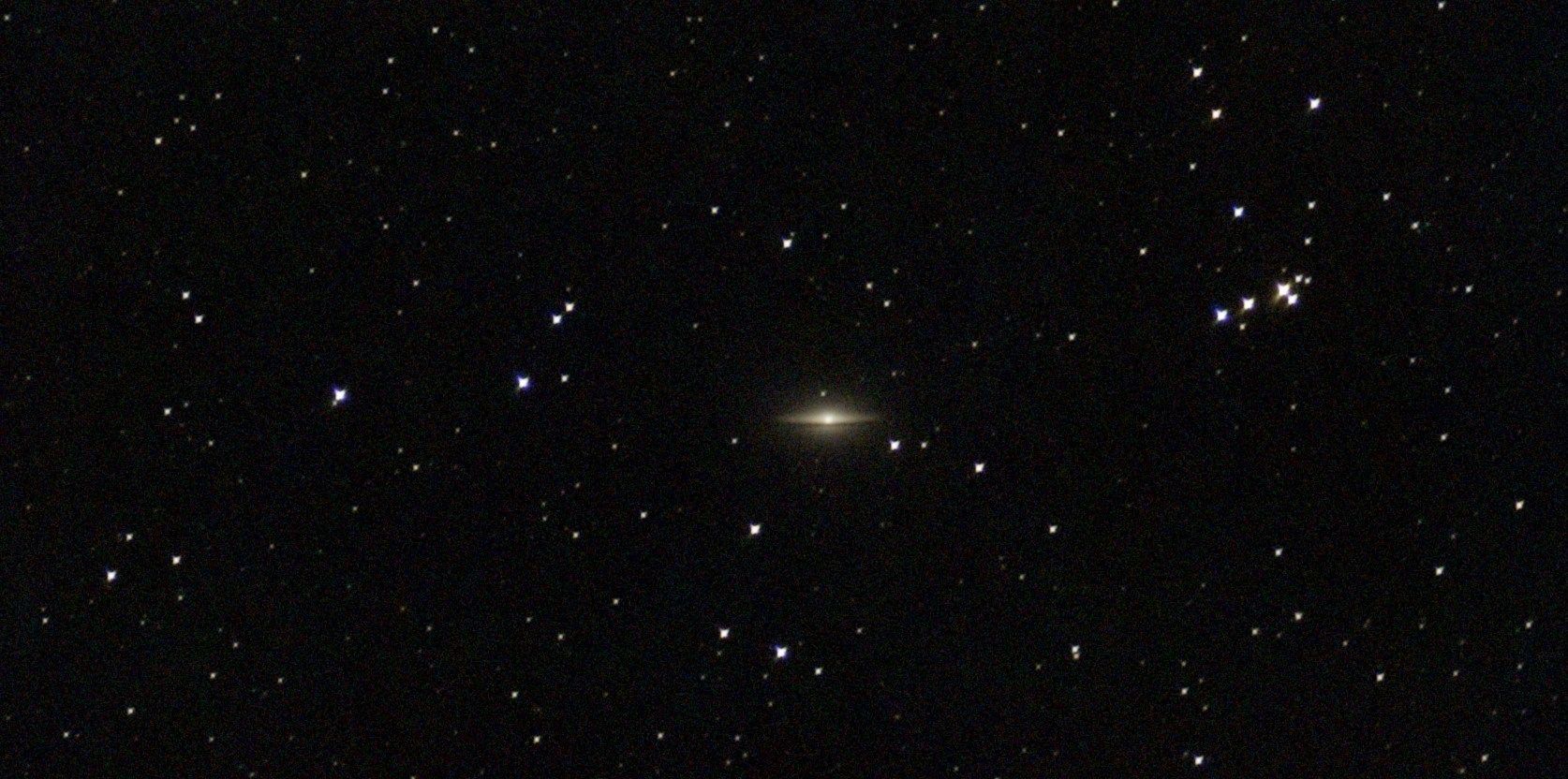M104
The Sombrero Galaxy (also known as Messier Object 104, M104 or NGC 4594) is a lenticular galaxy in the constellation Virgo located 9.55 Mpc (31,100,000 ly) from Earth. The galaxy has a diameter of approximately 15kpc (50,000 light-years), 30% the size of the Milky Way. It has a bright nucleus, an unusually large central bulge, and a prominent dust lane in its inclined disk. The dark dust lane and the bulge give this galaxy the appearance of a sombrero. Astronomers initially thought that the halo was small and light, indicative of a spiral galaxy, but the Spitzer Space Telescope found that the halo around the Sombrero Galaxy is larger and more massive than previously thought, indicative of a giant elliptical galaxy. The galaxy has an apparent magnitude of +8.0, making it easily visible with amateur telescopes, and it is considered by some authors to be the brightest galaxy within a radius of 10 megaparsecs of the Milky Way. Its large bulge, its central supermassive black hole, and its dust lane all attract the attention of professional astronomers.
The Sombrero Galaxy was discovered on May 11, 1781 by Pierre Méchain, who described the object in a May 1783 letter to J. Bernoulli that was later published in the Berliner Astronomisches Jahrbuch. Charles Messier made a hand-written note about this and five other objects (now collectively recognized as M104 – M109) to his personal list of objects now known as the Messier Catalogue, but it was not "officially" included until 1921. William Herschel independently discovered the object in 1784 and additionally noted the presence of a "dark stratum" in the galaxy's disc, what is now called a dust lane. Later astronomers were able to connect Méchain's and Herschel's observations.



